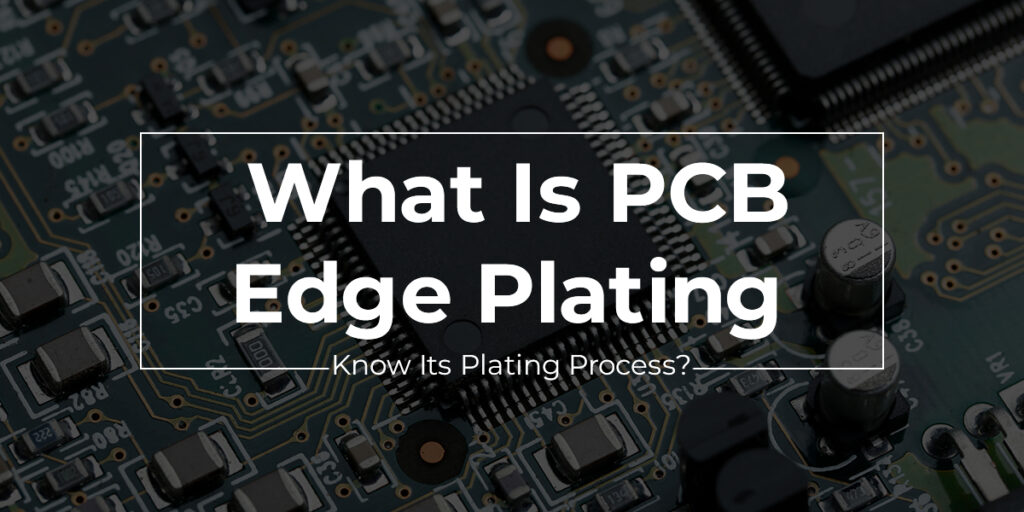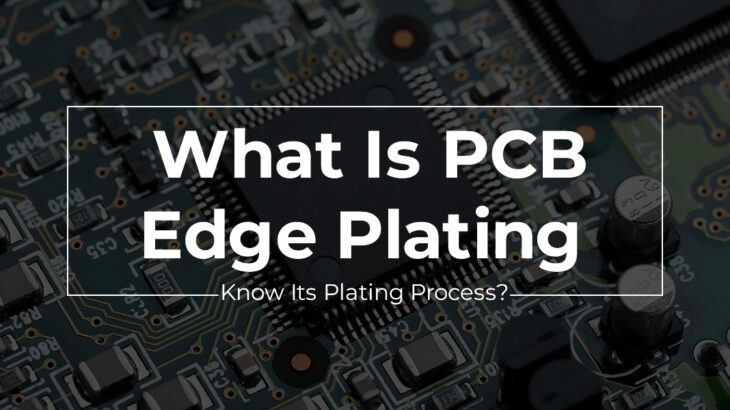
The Printed Circuit Boards (PCBs) are the fundamental components in any electronic device, connecting various other components. The PCB edge plating in PCB design services means the metallic coating application on the exposed copper connections along the PCB sides, facilitating easy electrical connections. This metallic coating, also called edge plating, castellation, or side plating, spans from the PCB’s top to the bottom surfaces and is present along at least one of the board’s perimeter edges.
The edge plating technique involves coating the PCB substrate’s side walls with copper, creating a conductive layer around the exterior of the PCB. This method, alternatively referred to as metalized edge plating, border plating, plated contour, side plating, and castellation, aims to enhance the PCB’s conductivity. Edge plating is adaptable and can be implemented on either single-axis or multi-axis edges of PCBs.
Why Should PCB Edge Plating Be Done?
- One of the primary reasons your PCB circuit should undergo PCB edge plating is that there will be reduced electromagnetic interference.
- The edge plating provides a conducive path continuously along the PCB edges, significantly weakening the EMI.
- Improves the establishment between the metallic enclosure and electrical link, i.e., chassis grounding.
- Increases the structural integrity of the PCB circuit, making them resistant to warping and bending.
- Finally, it ensures that PCB electrical connections throughout the circuits are consistent and reliable.
Common Materials Used In PCB Edge Plating:
The materials commonly utilized in PCB edge plating are silver, nickel, gold, and tin. In addition, there are three types of PCB edge plating, and they are,
- Wrapping edge plating
- Tooth edge plating
- Regular plane edge plating
PCB Edge Plating Process:
Designing:
The foremost step in the PCB edge-plating process is designing, where the designers specify the board that needs to be edge-plated for components or connectors.
Panelization:
In many businesses, the PCBs are fabricated on larger panels for increased efficiency. Hence, the process is applied for the whole panel, and later, PCBs are individually separated.
Holes Are Drilled On PCBs:
The holes are drilled along the edges of the PCB boards called edge contacts, which are the access sources for plating.
Preparing The Surface:
The PCB edge contacts are cleaned, compressed, and roughed for excellent adhesion.
Electroless Plating:
The electroless plating is performed with the help of a chemical method using copper. A thin layer is formed along the edges of the PCB board for subsequent processes.
Electroplating:
Additionally, PCB edges are electroplated with copper through electroplating for optimum durability and conductivity.
Etching:
The additional copper is eliminated in this process, allowing the copper traces to remain on the desired spots.
Final Finish:
In this step, the final finish for the PCB edges is given by applying gold or tin for increased resistance against corrosion and solderability.
Networking:
Finally, the PCBs are fabricated on the large panel and taken separately by edge cutting or routing of the large panel, leaving traces of the copper-plated edges.
PCB Edge Plating Application Techniques:
The methods for incorporating edge plating into a printed circuit board (PCB) include two ways:
- The edge plating can be implemented as a distinct copper structure by separating from the PCBs copper pours. This approach is frequently employed where a protective ring is formed and creates a connection for chassis ground.
- Apply a pour layer of polygon around the printed circuit board (PCB), extending to the opposing surface layer. It establishes a grounding connection for the system and clears the top layer like the above method.
Understanding PCB edge plating and their process is crucial for enhancing the performance and reliability of printed circuit boards.




 +1.585.935.7123
+1.585.935.7123 +91-804-148-6861
+91-804-148-6861